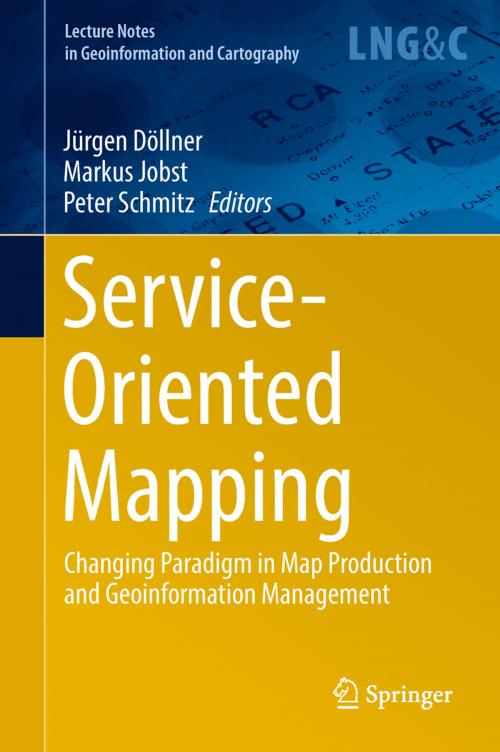Service-Oriented Mapping
Changing Paradigm in Map Production and Geoinformation Management
Nonfiction, Science & Nature, Science, Earth Sciences, Geography, Computers, Database Management, Data Processing| Author: | ISBN: | 9783319724348 | |
| Publisher: | Springer International Publishing | Publication: | June 7, 2018 |
| Imprint: | Springer | Language: | English |
| Author: | |
| ISBN: | 9783319724348 |
| Publisher: | Springer International Publishing |
| Publication: | June 7, 2018 |
| Imprint: | Springer |
| Language: | English |
This book gathers various perspectives on modern map production. Its primary focus is on the new paradigm of “sharing and reuse,” which is based on decentralized, service-oriented access to spatial data sources.
Service-Oriented Mapping is one of the main paradigms used to embed big data and distributed sources in modern map production, without the need to own the sources. To be stable and reliable, this architecture requires specific frameworks, tools and procedures. In addition to the technological structures, organizational aspects and geographic information system (GIS) capabilities provide powerful tools to make modern geoinformation management successful.
Addressing a range of aspects, including the implementation of the semantic web in geoinformatics, using big data for geospatial visualization, standardization initiatives, and the European spatial data infrastructure, the book offers a comprehensive introduction to decentralized map production.
.
This book gathers various perspectives on modern map production. Its primary focus is on the new paradigm of “sharing and reuse,” which is based on decentralized, service-oriented access to spatial data sources.
Service-Oriented Mapping is one of the main paradigms used to embed big data and distributed sources in modern map production, without the need to own the sources. To be stable and reliable, this architecture requires specific frameworks, tools and procedures. In addition to the technological structures, organizational aspects and geographic information system (GIS) capabilities provide powerful tools to make modern geoinformation management successful.
Addressing a range of aspects, including the implementation of the semantic web in geoinformatics, using big data for geospatial visualization, standardization initiatives, and the European spatial data infrastructure, the book offers a comprehensive introduction to decentralized map production.
.















